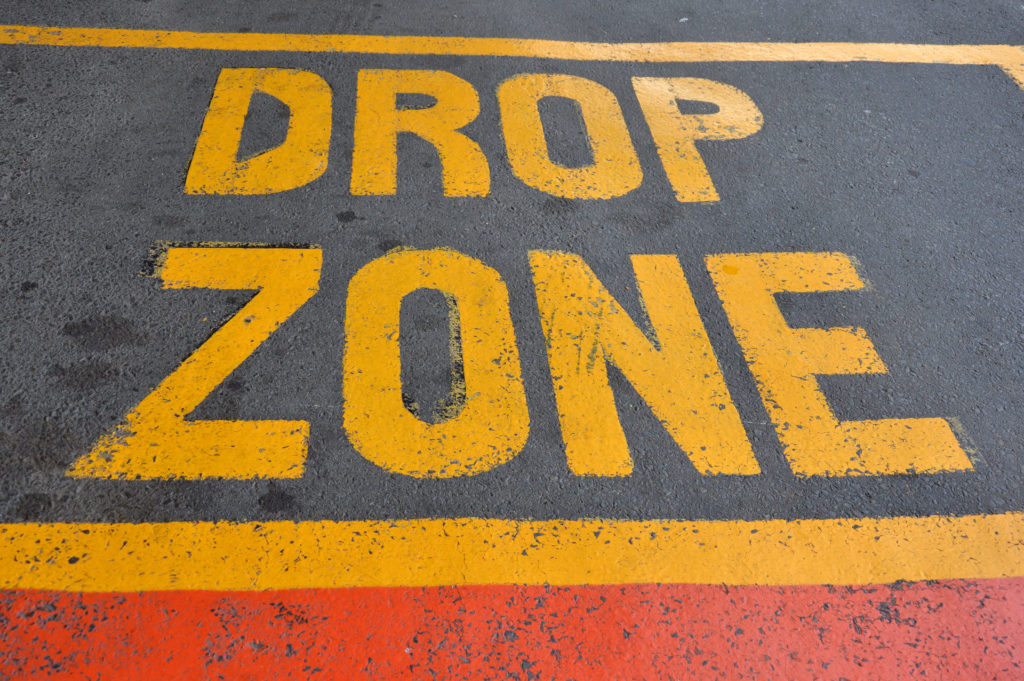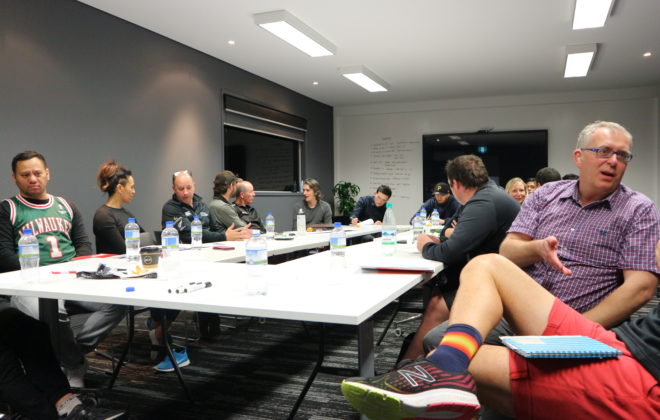Sport Drop Out: The Three Sport Drop Zones
Sport Drop Out: The Three Sport Drop Zones.
Every sport – in every nation – talks about the phenomenon of the sport “drop out rate”, i.e. the rate at which kids drop out from playing competitive sport during their teenage years.
Everyone’s got a theory to explain sport drop out.
“They were pushed too hard to early”.
“Life caught up with them and they wanted to try other things”.
“They became focused on their school grades and couldn’t continue training and playing competitive sport”.
But there is a way to decrease the sport drop out rate and it starts with understanding the three Sport Drop Zones.
Sport Drop Zone 1: Entry to High School
At Sport Drop Zone 1, kids are changing rapidly: developmentally, biologically, physically, emotionally and even geographically as they make the transition from being “little-kids” to “big-kids”.
In primary school they usually have one teacher, a small group of friends and a fun, family, friendships orientated learning environment. High school means many new teachers, new ideas, new friends and new ways of doing things. Their minds, their experiences and their engagement with the world is changing rapidly.
There are also significant developmental changes which underpin much of what the athlete thinks and does.
In sporting terms, Sport Drop Zone 1 is often the place where teachers and coaches encourage young athletes to play one sport or another and to start to specialize.
Sport Drop Zone 2: Entry to “Serious” High School
Around their mid-teens, usually prompted by their parents and their school teachers, kids start to consider their future a little more seriously.
The “big” question, i.e. “what do you want to do for the rest of your life” starts to become more important and a lot more serious and kids are routinely told “it’s time” to start studying hard, to think about their future and to consider their possible career direction.
In many nations, where academic success is prized and valued far more highly than sporting success, kids in their mid-teens simply walk away from all competitive sport to concentrate on their school studies.
Athletes in this Sport Drop Zone are also experiencing several significant and important developmental, social and physical changes all of which have the potential to impact on their capacity, desire and ability to train for and play competitive sport.
Sport Drop Zone 3: Entry to University (or the Workforce).
In Sport Drop Zone 3, the Entry to University (or the Workforce), athletes are facing considerable life changes.
For those athletes continuing their studies, there are pressures to gain entry into the “right” University, to be accepted into the “right” courses and the pressures of more practical challenges like finding affordable and appropriate accommodation. There’s the need to earn some sort of income to support themselves as they study. There’s a desire for independence and freedom, including in many cases the need to purchase a motor vehicle.
For many athletes, it’s not about University – it’s about finding a job: about gaining and retaining employment.
At each of these three Drop Zones, the developmental, social and other needs of athletes change considerably and as a result, what they are looking for in their sports experience – their sport “relationship” also changes.

Why is Knowing and Understanding Sport’s Drop Zones Important?
We also know that sporting organizations, sporting clubs and governments across the globe are all rushing to find effective solutions to address this situation by introducing a wide range of new ideas such as “modified” versions of sport, shorter and more dynamic “games” based on different sports, “E” versions of sport and more flexible “community-based” sporting options.
Ultimately however, people will do what they love doing.
They will make time to do the things that they feel are of value, are rewarding, are meaningful and are providing them with an experience they enjoy.
The main reason kids drop out of sport is that they stopped loving what they do. Plain and simple.
They fell out of love with their sport and they found something else to focus their time, energy and “love” on.
If any relationship falls apart – a marriage – a business partnership – a friendship – or an athlete-sport relationship – the first question has to be…”why”?
Why Kids Fall Out of Love with Their Sport: Explaining Sport Drop Out.
There are many reasons why kids fall out of love with their sport including:
- It stopped being fun. This is without doubt the number one reason athletes drop out at each of the sport drop zones.
- The athlete developed and progressed – but their coach didn’t. Coaches need to learn, to grow and to develop at a rate as fast – or even faster than the athletes they are coaching.
- Their coach didn’t adapt, change and innovate in line with the athlete’s changing needs. It is unreasonable to expect that an athlete will continue to accept the same coaching methods and coaching techniques at 18 years of age as they did when they were 8.
- Their friends – their peer group – all moved on to something or somewhere else. Coaches, Sporting Clubs and sports generally should place far more emphasis on creating, building and maintaining environments where peer groups can grow and flourish as athletes change and mature.
- Another “relationship” became more appealing. Athletes who are not enjoying their sport “relationship” or if their sport “relationship” doesn’t meet their needs, will seek another relationship.
- The sport’s competitive structure didn’t change or adapt as the athlete’s needs changed. Far too many sports offer the same competitive structure, the same Meets, the same tournaments etc. for athletes in their late teens as they do for athletes in their early teens.
Real Life Story:
A parent wrote to me recently and asked for advice. Their daughter was turning 15 and entering “serious” high school, i.e. Sport Drop Zone 2. She was a good student and had aspirations of studying law at University one day. She was also a very well performed basketball player who had represented her state at national championships level.
The athlete decided to take on some additional studies to help in her long-term plan to be accepted into a good University law program which meant she would be late for her basketball training sessions.
She went to her coach and discussed the situation, offering to stay back and do extra training to make up for the lost time or to follow a training program she could do in her own time to make sure she was continuing to prepare to the level he expected.
Her coach said, “If you can’t be here on time, you’re obviously not serious about basketball and there’s no place for you on this team”.
Completely shattered and disillusioned at the coach’s lack of flexibility and understanding, the young athlete dropped out from basketball all together.
How to STOP the DROP…stopping the Sport Drop Out Phenomenon – Three Tips!
- School teachers don’t teach advanced calculus to 11 year olds. And they don’t teach simple arithmetic to 17 year olds. Tailor your coaching and athlete development activities to be appropriate for the age and “stage” of the kids you’re working with.
- Adapt your training and competition structures to the changing needs of the kids in your programs. If your training and / or competitive structures do not change as the athletes in your sport grow, change, mature and develop, expect to see a significant drop out rate.
- Take time to understand the rationale behind the Sport Drop Out phenomenon and more importantly take time to understand the unique developmental changes each athlete is experiencing at each of the Sport Drop Zones.
Summary:
- All sports experience the Sport Drop Out problem. The challenge is – what are YOU and YOUR sport going to do about it?
- Sports who take time to understand the reasons behind their sport’s drop out pattern can develop ways of making sport more engaging, exciting, relevant and enjoyable for athletes at each of the drop zones and in doing so decrease the likelihood of the athletes severing their connection with the sport.
- Ultimately, people will stay connected with and engaged with experiences and relationships which they enjoy and that meet their needs. Knowing that – and accepting that athletes change in relatively predictable ways – coaches, clubs and sporting organizations can design and develop better ways of delivering sports experiences to everyone in their sport.
Wayne Goldsmith
Video Production and Editing Red Boss Productions.
Video location courtesy of Noosa Council – Noosa Leisure Centre
Tags In
Related Posts
1 Comment
Leave a Reply Cancel reply
Categories
- Athlete Development (3)
- Coach Development (1)
- New Sport (10)
- Sports Parenting (1)
- Sports Participation (1)
- Sports Science (1)
- Sports Systems (4)







Yes, the need for athletes is to set up a formula that fits each individual athlete. I know it very well because I did it myself all I need is opportunity with four year plan and I will produce a champion in that country.